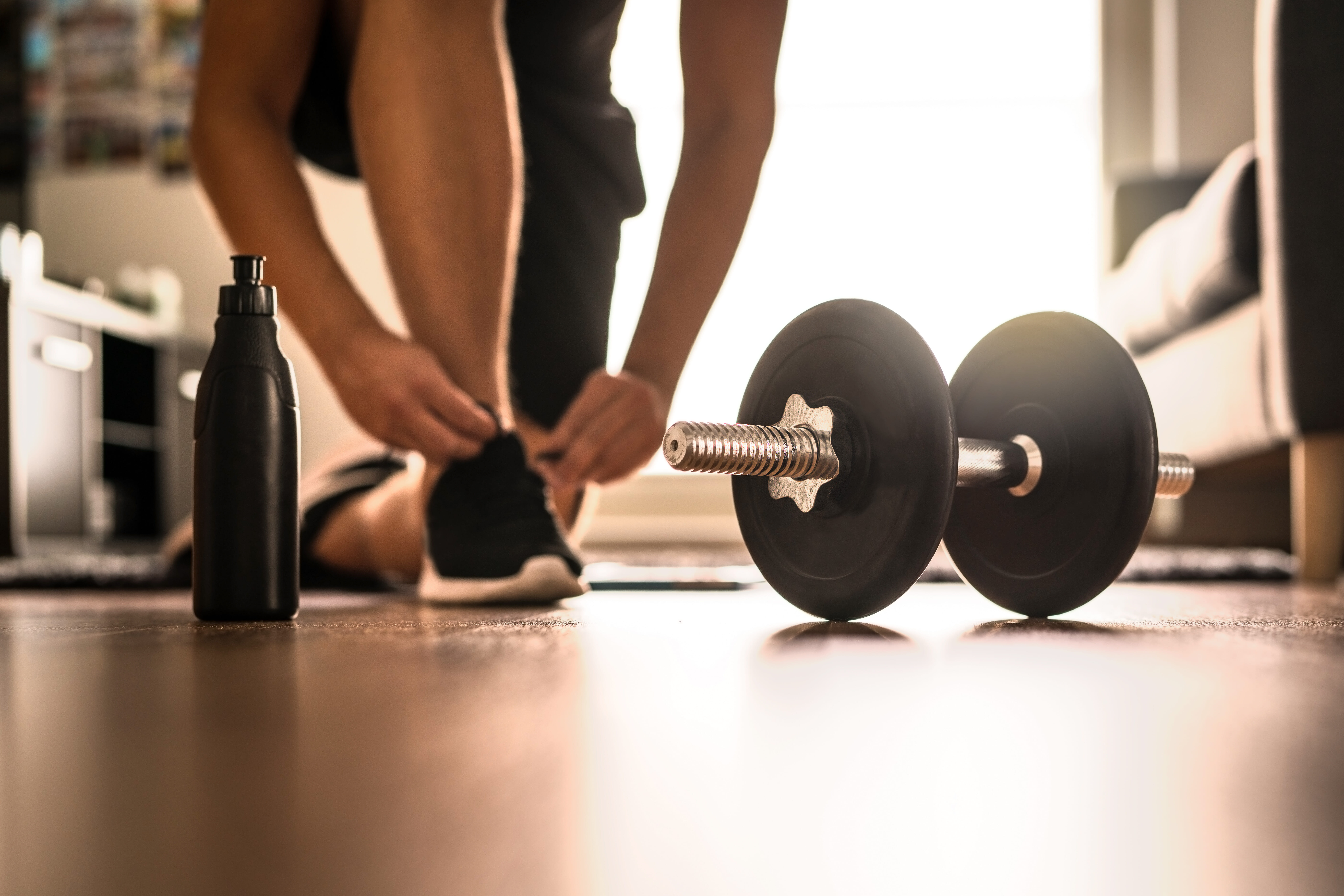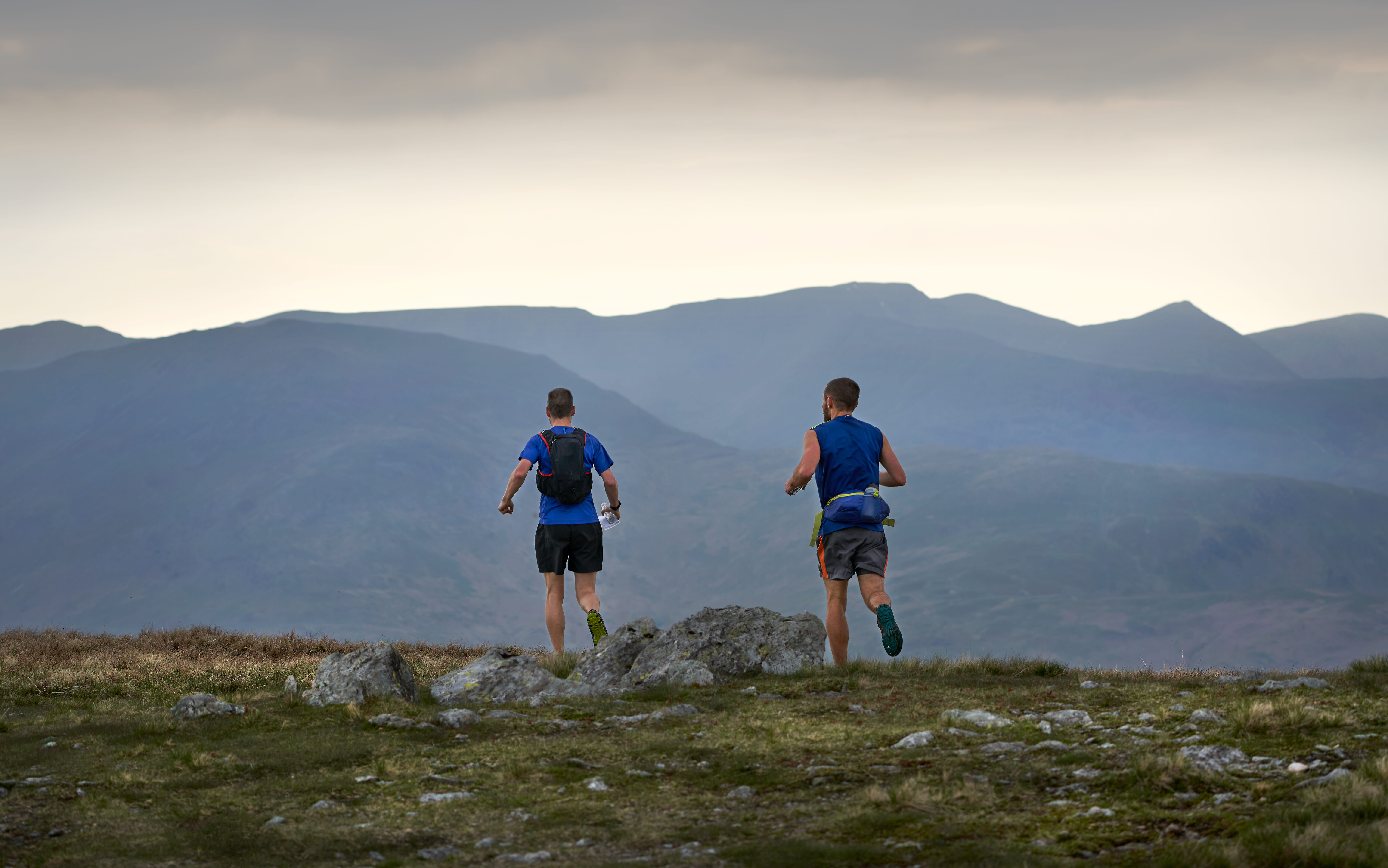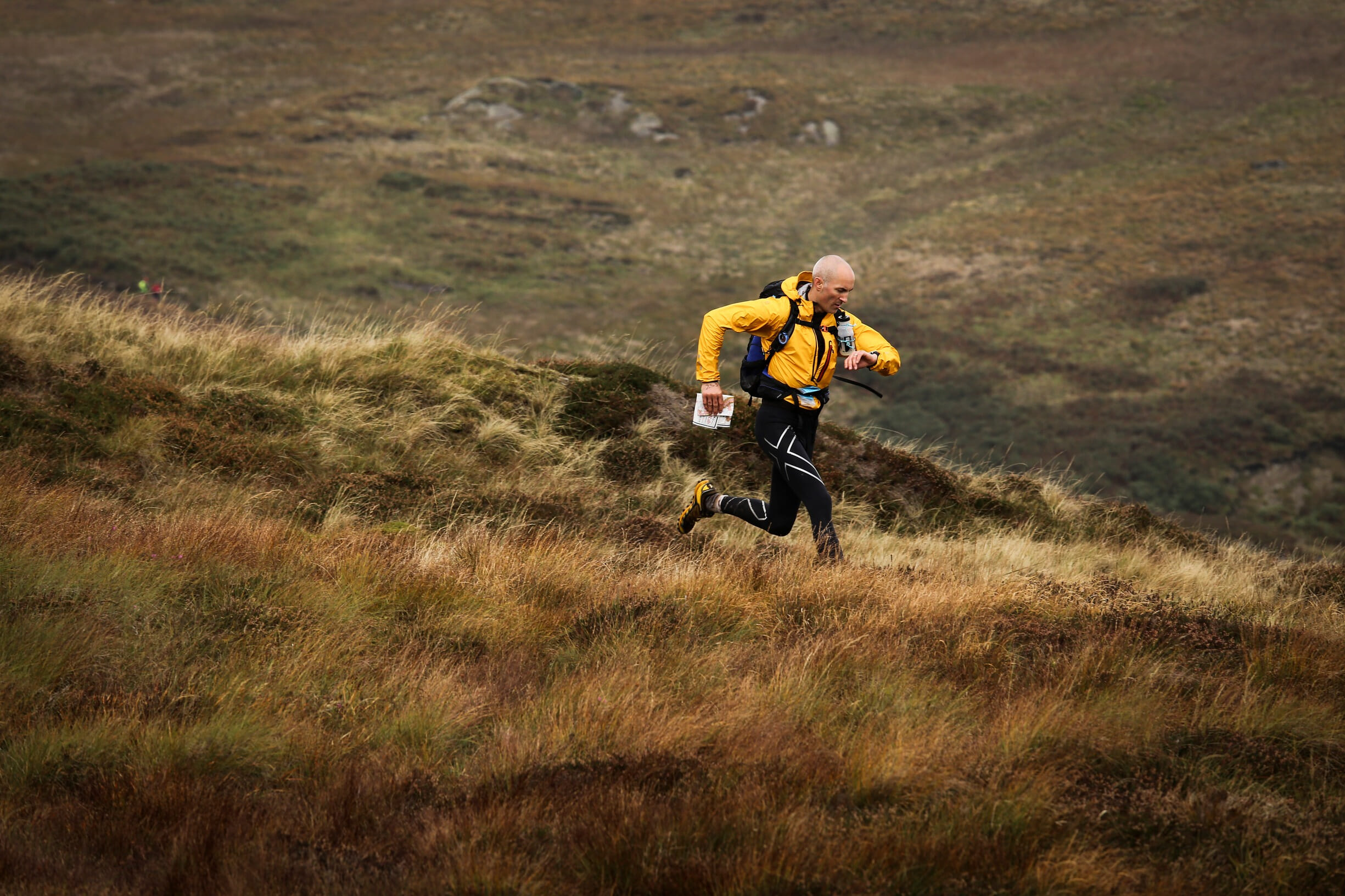Cross-training for runners
If you want to become a better runner, you need to mix up your training. Weightlifting, bodyweight exercises and yoga all have a place in strengthening your muscles and joints, improving your running form and staving off injury. This is your complete guide to cross training for runners.

Running is one of the best, most accessible ways to get active outdoors and improve your physical and mental health. Just running, though, likely to lead to a plateau in performance or, in the worst case scenario, injury.
The key is to combine running with other types of exercise that use your muscles, joints and energy systems in different ways, which is called cross training. Done correctly, this is a great way to elevate your running performance and bulletproof your body from potential injuries.
Whether you're a beginner runner looking for advice on how to improve or an experienced racer who needs some fresh impetus to break a plateau, cross training can help you to boost your running game. Here, we break down what cross training is, the essentials for runners and how to build cross training into your weekly routine without over-training.
What is cross-training?
First, let's clarify what cross training is not:
It is not swapping running outdoors for training in the gym.
It is not simply adding more training sessions on top of your weekly runs.
It is not about turning into a muscle-bound hulk swigging protein shakes.
Some runners worry that strength training - which is not all that cross training is but does form a large part - will negatively impact their performance or will mean they need to spend hours in a gym. For the record, that's not what cross training is about.
Essentially, cross-training is any exercise you do that supplements your running training - that's it. Often, this will look like doing bodyweight strength exercises or yoga to strengthen muscles and help to prevent injury, or adding a swimming session into your weekly routine to take pressure off your joints. There's a huge range of options for runners, including cycling, pilates, hiking, calisthenics, and many more.
What are the benefits of cross-training for runners?
Running is brilliant for your body and mind. Physically, it develops your aerobic system to be more efficient and reduce your risk of cardiovascular disease, as well as strengthening your muscles. Mentally, running promotes the development of serotonin, the feel-good hormone that helps to reduce anxiety and depression. As an exercise with limited kit required to get involved, running is often considered a panacea to modern illnesses and ailments.
Done in isolation, though, lots of running can put pressure on your joints and bones that ultimately leads to injury. What's more, runners can hit a plateau - i.e. stop progressing in getting faster or fitter - where adding extra running sessions in won't help. That's why cross training is so important.
Cross training can help to prevent injury and boost your running performance by subjecting your body to different types of stressors, forcing adaptation. It's like the old adage: "If you want to go fast, go alone. If you want to go far, go together." To go far in running, you need to combine your run sessions together with different exercises.
Dos and don'ts
To build cross training into your weekly routine successfully, there's a few simple rules to follow:
Do
Start slowly - any new activity needs to be built in gradually and at a basic level, after which you can start to up the ante. So if you're going to start strength training, don't immediately pick up a 100kg barbell - start small and build up.
Do something fun - runners can often be adverse to cross training as, you know, it's not running. The key is to find something enjoyable and sociable to keep you interested, like signing up for a group circuit class rather than solo gym sessions.
Seek advice - you know that you need to mix up your training but aren't sure where to start? This guide will help to get you going but you may also want to seek the specific help of a personal trainer or coach to identify what you as an individual need to do to improve.
- Rest - adding new types of exercise into your routine is going to be tiring, at least at first, so make sure you're getting enough rest to actually benefit from the added movements!
Don't
Try to do 200% - you can't be training 100% for running and 100% for strength training as you'll just be overloaded. Instead, you'll need to cut some of your running sessions to accommodate cross training - don't worry, it will benefit your performance and doesn't need to be a permanent change!
Make it up - as much as cross training is versatile and can accommodate pretty much any type of exercise, simply winging it means you could end up over-training a muscle group without meaning to. Always plan your weekly routine to train specifically.

Cross-training will help you to become a stronger, more efficient runner.
Strength training for runners
Many runners seem unjustifiably concerned about strength training, either through misplaced fears about gaining excess muscle mass or through snobbish sentiments around the virtues of being outdoors rather than in a gym. We certainly believe that being outdoors is better for you than being indoors but that doesn't mean that strength training should be avoided - that's like avoiding eating an apple because technically other fruits have more vitamin C. What's more, strength training does not necessarily need to take place in a gym. Let's elaborate.
Bodyweight exercises for runners
While strength training is fantastic for helping to prevent injuries, many runners first encounter it after visiting a physio for a pulled muscle, sore back or some other common running ailment. They will likely be prescribed a combination of stretches and bodyweight exercises to strengthen the muscles and joints in that area. As such, concentrating on the latter before getting injured would seem sensible to us.
There's huge benefits to bodyweight training for runners, too. Not only is bodyweight strength training free, they are low-impact movements that won't overload your muscles and can be performed in a steady, controlled manner. Most movements can be adapted for people who struggle with the full exercise, too. Through bodyweight exercises, you can strengthen your entire body and start to protect your muscles and joints from the impact of regular running. What's more, they can all be performed outdoors!
The movements to focus on are:
Squats
One of the simplest movements to perform, these are brilliant for strengthening the legs and core of any runner. Hunter-gatherer societies are known to sit around campfires in a deep squat and it's a movement that humans are well adapted to, though many people struggle thanks to sedentary lifestyles and tight joints. Fortunately, that is relatively easily addressed!
How to do it: Stand with your legs shoulder-width apart and keep your back straight as you move into a sitting position, then stand up again. Aim for around 20 reps.
Lunges
A core principle of strength training is to be specific, i.e. to keep the exercises you perform closely aligned with your goal. For runners, there are few movements that will give as much bang for your buck as a lunge. Not only do they strengthen your leg muscles while simulating the motion of striding forwards, they focus on one leg at a time, which is much more accurate to running.
How to do it: Stand upright and step forwards into a deep lunge, keeping the knee on your planted leg off the ground and your other knee at 90°. Perform 10 reps on each leg.
Calf raises
Many runners will be prescribed calf raises by a physiotherapist if they've sustained an injury or developed a condition such as shin splints, so it's worth factoring them into your strength training routine as prehab. Your calves absorb a lot of impact from your foot strike so strengthening them will help you to push forward.
How to do it: Raise one foot off the ground, holding onto something stable if you need to. On your other foot, push up onto the ball of the foot and hold the position for a second before lowering it. Repeat 20 times on each leg.
Plank
Of course strengthening your legs is going to take priority for runners but neglecting your core is a recipe for disaster. Your core muscles - essentially everything in your midriff - are responsible for keeping you stable and upright as you run, as well as helping to power your strides. Training your goal is essential for developing an efficient running style.
How to do it: Get into a press-up position with your elbows and forearms on the floor, your hands clasped to form a triangle. Maintain a straight line from your shoulders to your heels for 60 seconds!
Plank to press-up
A progression from the previous move, this trains your core and your upper body at the same time. While you don't need to build muscle in your arms, chest or shoulders for running, building a balanced physique is important to an efficient running style. A small amount of upper body training from bodyweight exercises is enough to maintain this.
How to do it: From the plank position, push one hand up and then the other so you are in a press-up position, then perform a press-up by lowering your chest towards the ground then pushing back up. From there, return to the plank position and repeat for 10 reps.
Mountain climbers
These are aptly named as they roughly simulate the movement of taking big strides upwards as you climb a mountain - whether or not you're actually planning to, they're a useful exercise for conditioning your core muscles and legs at the same time. These will also raise your heart rate, helping to train your aerobic capacity.
How to do it: Start in the press-up position then drive one leg forward, planting it underneath your chest and keeping your hands in the same position. Quickly take it back to the start and repeat with the other leg. Perform 60 reps quickly while remaining controlled.

Strength training will help you prepare for more intense terrain.
Weight training for runners
While bodyweight exercises are effective, versatile tools for runners, you can take your strength exercises to the next level by introducing weight training. If you have some dumbbells or a barbell at home, you can perform all of the exercises below there. If not, the next best place is a gym.
As mentioned, some runners are hesitant to use a gym for weight training, usually through a lack of knowledge about strength training or from being put off by muscle-bound guys clanking weights and posing in the mirror.
It's important to acknowledge two things: first, not all gyms are reserved for people obsessed with building muscle (and those people are probably very friendly anyway); second, it's important to see a gym as a place with a specific purpose. Head in there to get some strength training done, then reap the rewards when you're out running.
It will be worth your while speaking to a personal trainer to be shown how to use equipment safely - once you have, here are some movements to get you started:
Bulgarian split squats
Don't let them name put you off - these are simple to do and incredibly effective for runners, whether you want to run ultra marathons or are a sprinter. This is a unilateral movement, which means it trains one leg at a time rather than both, like in a standard squat. This makes it very specific to running and well worth your time. You'll need a barbell and something to raise a foot onto, like a bench or box.
How to do it: Pick up a light barbell and place it across your shoulders, holding it with one hand either side of your shoulders. Raise one foot to place it on a bench or box behind you at knee height. Now lower yourself into a shallow squat on your standing leg, then push back to the top. Repeat for 10 reps.
Glute bridges
Your glutes are the largest muscle in your body and play an important role in running, helping to power each stride - strengthening them is going to help with your running efficiency and ability to power forwards when you need to push on. This movement can be completed with both feet on the flow or as a unilateral exercise, training each leg at a time. All you'll really need is a barbell but you may want something to cushion the bar with, too.
How to do it: Lie on your back with your knees raised, feet flat on the floor and a barbell laying across your hips. Bracing the bar with your arms to keep it in position, push your hips up to create a straight line from your knees to your shoulders. Return steadily to the start position and go again for 15 reps.
Turkish get-up
This is another one with a confusing name and this time it is a bit more complicated to perform but well worth your time. A full body movement that requires coordination, this primarily trains your core muscles but also helps to strengthen your joints and prepare you for moving on uneven terrain. You'll need either a dumbbell or, preferably, a kettlebell.
How to do it: Start by lying flat on your back with the kettlebell next to your shoulder. Push it up to over your shoulder and raise your knee on the same side with your foot flat then, keeping the weight directly above you, push yourself up on your other elbow. From here, push yourself up from your elbow to your hand and pull your flat leg underneath you onto your knee. From here, stand upright and keep the weight directly above you. Reverse the process to return to the start.
Barbell clean
Developing power in your legs and core is important for all runners, giving you the ability to push up hills and kick into a higher gear when you need to overtake someone. This compound movement is all about building speed and power in your three main lower joints: the hips, knees and ankle. The "triple extension" of these joints in the clean is the key to progressing with the movement.
How to do it: Start with a barbell on the floor in front of you, your feet hip-width apart. Grab the bar with your hands at shoulder-width and lower your hips to be in a seated position. From here, stand up quickly and pull the bar with you, using the momentum from your leg drive to pull the bar to chest height. At that point, pull your arms underneath bar to catch it by your shoulders.

Becoming more mobile will help you take on more uneven terrain!
Stretching for runners
Cross training is about switching up your training routine to improve your performance and prevent injuries. Strength training is an important part of both of those but it's not the complete picture.
Injury prevention, as any physio will tell you, is about staying on top of one of the least glamorous parts of training: stretching. Bear in mind, though, that we're not talking here about any stretching you may do after running - we'll cover that separately. This is purely about additional mobility and flexibility sessions you may want to perform as part of your cross training.
Flexibility vs mobility
Although being mobile and being flexible are both important for runners and may seem to encompass the same basic concept, they are fundamentally different. Mobility refers to the range of motion at a joint under your own control; flexibility refers to the total range of motion at a joint, perhaps involving an external stimulus like a resistance band.
Why is the difference important? Well, being mobile means having the ability to actively move through a range of motion safely, like going into a deep squat. Being flexible means feeling comfortable having your joints stretched, such as touching your toes without a feeling a significant pull in your hamstrings. Both are important for runners.
Mobility for runners
Performing mobility sessions will strengthen the muscles around your joints, which will have two key effects for running: first, you will run more efficiently, particularly when taking on uneven terrain or hills; second, you will be less likely to get injured, at least where your joints are concerned. What's more, additional mobility sessions will help to relieve tension in muscles after you have run.
Keen-eyed readers may have noticed that mobility training is very similar to yoga, involving many of the same movements and physical principles without reference to the more spiritual side of that discipline. With that in mind, there are a few mobility exercises that it is worth focusing on:
Downward dog
Runners often get tight hamstrings so this movement is performing for improving your range of motion, keeping you moving efficiently and reducing the risk of injury. It's a highly common position in yoga and can be adapted to be easier by simply bending the knees slightly.
How to do it: Begin in a press-up position and walk your feet forwards while raising your hips, pushing your upper body back slightly to create an upside-down 'V' shape. You will feel a stretch in your hamstrings but don't feel like you need to push too far into the stretch - you can move your legs to remain comfortable.
Deep squat
While bodyweight and weighted squats are brilliant for developing strength in your thighs, sitting in a deep squat will help to bolster the range of movement around your hips. For runners, this means that encountering a steep incline or technical trail is less likely to result in an injury.
How to do it: Stand with your feet just wider shoulder-width apart and your toes turned slightly out. Move into a sitting position, going down as far as is comfortable while leaning slightly forwards to avoid falling back. Remain in that position for as along as is comfortable.
Pigeon pose
Another brilliant movement for your hips, this stretch is also going to improve your range of motion around your glutes and lower back. There are variations to develop or reduce the stretch depending on how you feel.
How to do it: From a deep lunge, take your forward foot underneath your body, moving that knee to the ground and laying your lower leg on the floor, ideally perpendicular to your torso but it's not an issue if that feels uncomfortable. Lean into the stretch if that feels comfortable but feel free to use your arms to take some of the weight off your forward leg.
Flexibility for runners
Since running basically (very basically) involves flexing and extending your legs many, many times, that builds up tension in your ankles, knees and hips over time. One of the best ways of remedying this is to stretch out those joints, letting gravity and sometimes external resistance extend the connective tissue beyond its regular range of motion - safely of course.
What that means, though, is that you should never do any flexibility training - i.e. static stretches - with cold muscles. While the above mobility training can be performed as an additional cross training session, static stretching should be reserved for after running or other workouts, like strength training. We'll come onto that in another resource.

Swimming is a very effective cross-training modality, taking pressure off your joints.
Extra aerobic training for runners
While cross training is often used to refer to types of training that are substantially different from running, like strength training and mobility sessions, it's really a very broad definition that includes any kind of exercise where you're not running.
What this means is that you could consider other types of exercise that have a similar effect on your heart rate and energy systems as cross training, like swimming, cycling and team sports. All of these activities are brilliant for runners, keeping you fit while taking the pressure off your joints from pavement pounding.
Swimming
Of all the additional types of aerobic exercise that runners can get involved in, swimming is probably our favourite. It takes all pressure off your joints and has zero impact, so you can keep fit while your joints and connective tissue recover. What's more, there's no impetus to train hard so you can enjoy a low intensity session that aids your recovery from running while keeping you active. If you manage to swim outside in the warmer months, even better!
Cycling
The crossover between running and cycling is one of the reasons that multi-sports like triathlons and duathlons are so popular, so it makes perfect sense that cycling would be a great form of cross training for runners. While the effort of pedalling clearly applies pressure to your leg muscles, there is no impact from cycling so your knees and hips can take a break from absorbing the repetitive impact of running. Many runners will include a regular cycling session in their weekly training routine to keep moving while mixing up their exercise.
Walking
While you might not automatically consider walking as exercise in the same bracket as running, that's kind of the point - these sessions are about staying active while letting your body recover from your run. What's more, a long hike in the hills is definitely going to test your muscles!
Team sports
As well as providing great fitness training, team sports like football, hockey and rugby are brilliant for providing a social circle that runners often lack. Running clubs are a brilliant antidote to this isolation but if you want to mix up your training, consider joining a casual team for a weekly kickabout - these groups are usually more about having a laugh than competing seriously, so there's less of a worry about risking injury, too. Though weekly five-a-side games at work have been known to get pretty serious!
How often should you cross-train?
Armed with knowledge on how to cross train, the next logical question is how to implement those sessions into your weekly training. As with most queries about health and fitness, the answer is accurate but underwhelming: however works for you!
Some experienced runners will train nearly every day of the week, clocking up a huge mile count over the course of a month. Beginner runners will probably rest more, allowing their body to adjust to the increased demands being placed on it. As such, the level of cross training each runner needs will be different depending on many individual circumstances.
A key point to note is that for runners, cross training is all about performing different types of training that benefit your running, which is still your primary focus. It would make no sense to start strength training four times a week and cut your running down to a single session. There needs to be a balance in your training that prioritises running but doesn't overdo it.
In general, most runners aim to cross train once or twice a week, but this will depend on how often they are running. That might include one strength training session and one swimming session, for example. When it comes to mobility training, you may feel happy adding these sessions in on the same day as a run or other exercise. Maintaining balance in your training is essential.

Don't forget why you're cross-training - to become a better runner!
How to avoid over-training
While many runners don't do any cross training and suffer as a result, it can be tempting to go the other way and start adding in a variety of different sessions all at once. It doesn't take too much consideration to see that this will lead to overtraining and burnout, however.
Overtraining is when you ask too much of your body and don't allow enough time to recover, making your risk of injury much higher. So if you already run three or four times a week and try to add in a strength session, a swim and a five-a-side kickabout, the end result is going to be doubling the demand on your body and an express ticket to the physio.
Keep your eyes on the prize
As a runner, we'll assume that's your goal: to improve your running. What this means is that all cross training you do should work towards that goal, not hinder it. You may need to remove one running session from your weekly routine and replace it with strength training, which will likely benefit you. Just adding to your existing load will probably have the opposite effect. If in doubt, ask yourself whether what you're doing will ultimately help or hinder your progress.
Periodise your training
We're starting to talk about more serious coaching now but this approach will take a long-term view of your goals and your training, finding the right times of the year to focus on running and the right times to focus on strength work. If you've entered the Great North Run, for example, you might decide that throughout the winter, it's a good idea to reduce your running load and start strength training more to build up your muscles. Then, when the weather improves, you could ease back in the gym and get out running more often.
That's a simple explanation of what can involve complex programming but it's a helpful way to avoid overtraining - don't try to do everything at once! You may find it useful to discuss this with a running coach at your local club.
How to get started
There's no doubt at all that cross training holds huge benefits for runners, whether that's developing stronger muscles, becoming more mobile or just mixing up your weekly routine to avoid boredom. Our advice would be to pick one thing and trial it - don't overload yourself by trying to make drastic changes. Begin with some of the basic exercises mentioned in this guide and see how you go, making sure to take it steady. Finally, let us know how you get on!